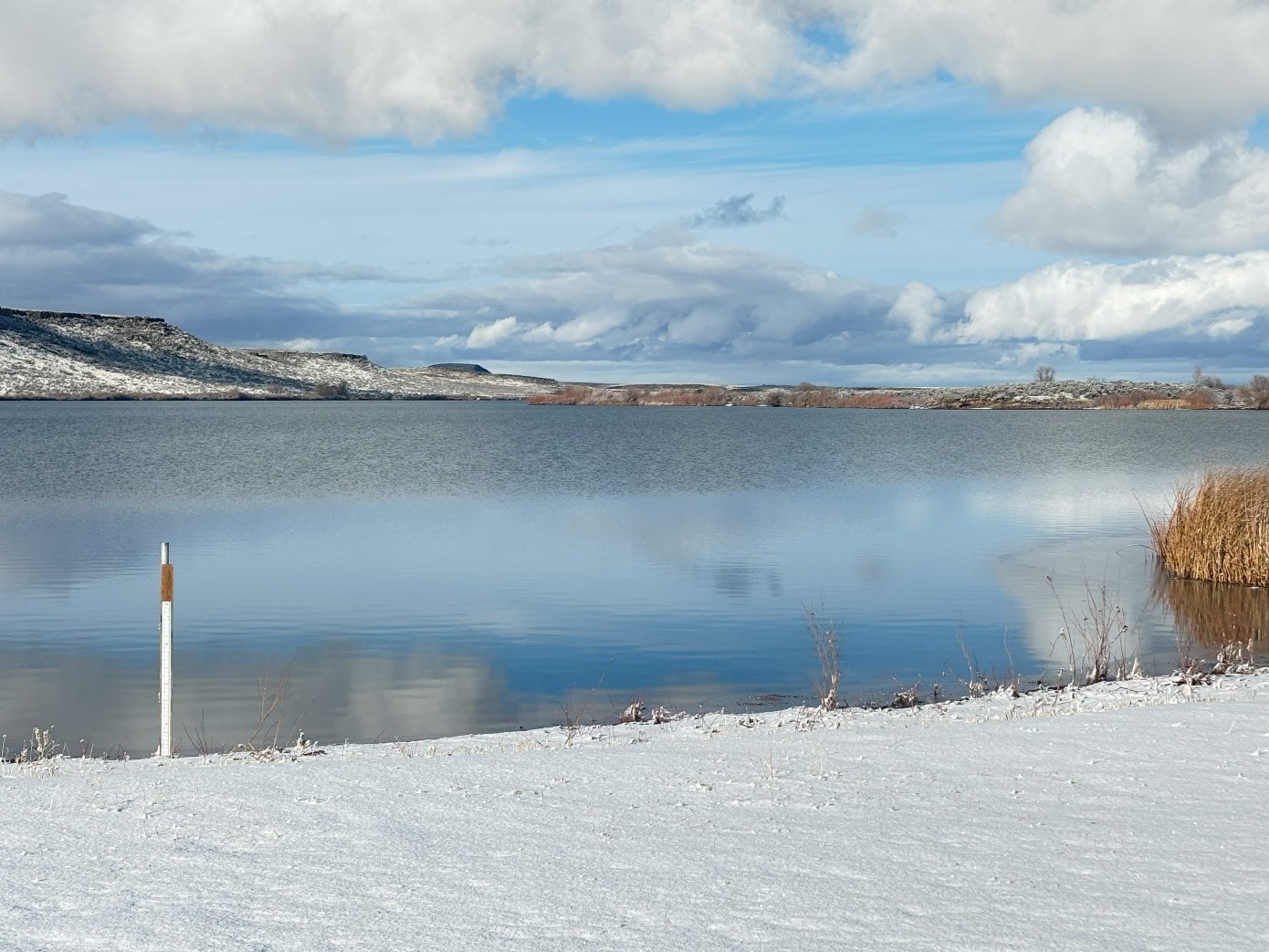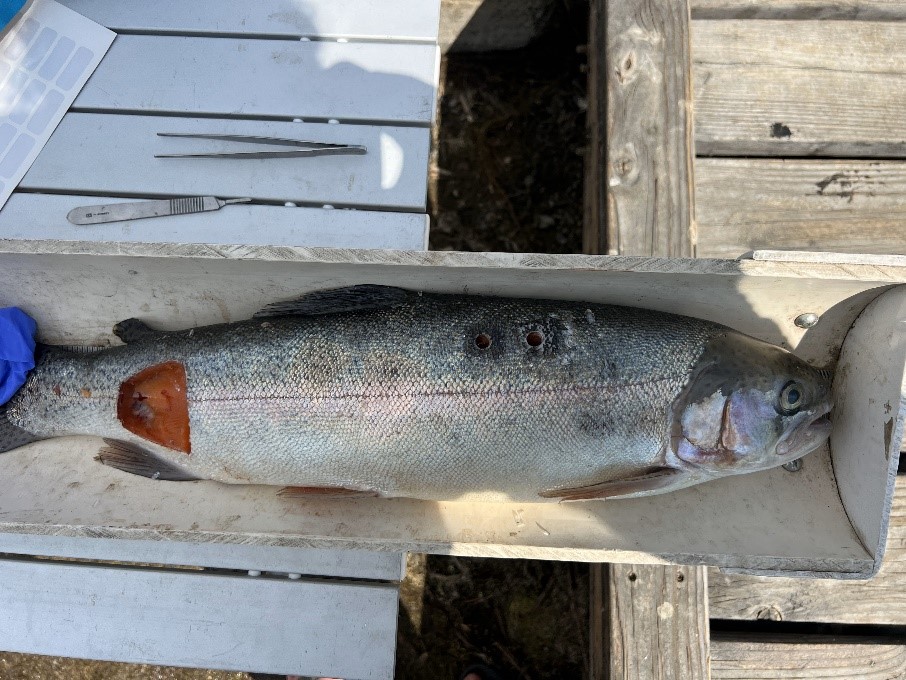Water Pollution Prevention Program (W.P.P.)

During the winter months all traces of cyanobacteria are gone. The monitoring of all the water will continue. The last water collection was completed on November 13, 2024. During these collection times we gather the following information: temperature, millimeters of mercury, oxygen, ions, and PH levels. All the information is gathered in the field using a SONDE. All water samples are then sent to the Bureau of Reclamation Regional Soil and Water Lab in Boise, ID to be tested for nutrients, bacteria, and inorganics. All results received can be viewed by clicking this link. Once you have navigated to the water quality page just enter in the information of the area you would like to see results for.

In August ten rainbow trout were collected from the Sheep Creek, Billy Shaw, and Mountain View Reservoirs, to complete mercury testing to ensure that the fish maintain a safe level of mercury. This was done in collaboration with the Fish and Game department. Results for the mercury testing will be available in March of 2025.

(Click the hyperlinks below to view & print as PDFs)
Map of BIOASSESSMENT
MONITORING SITES
Map of WATER QUALITY
MONITORING STATIONS
